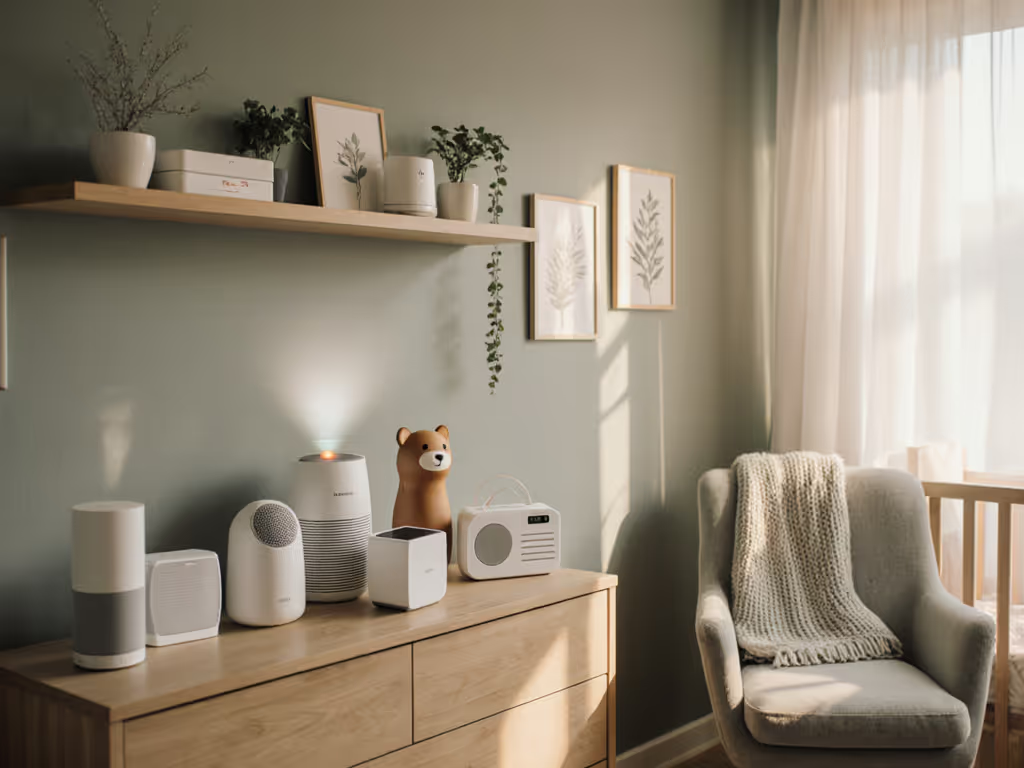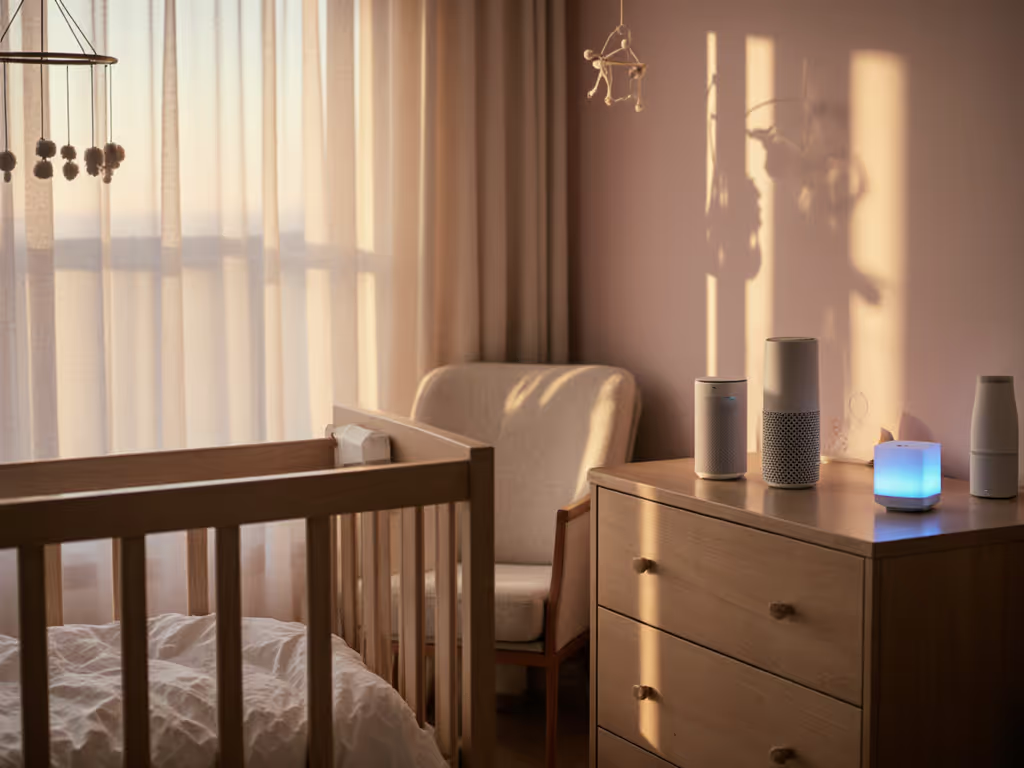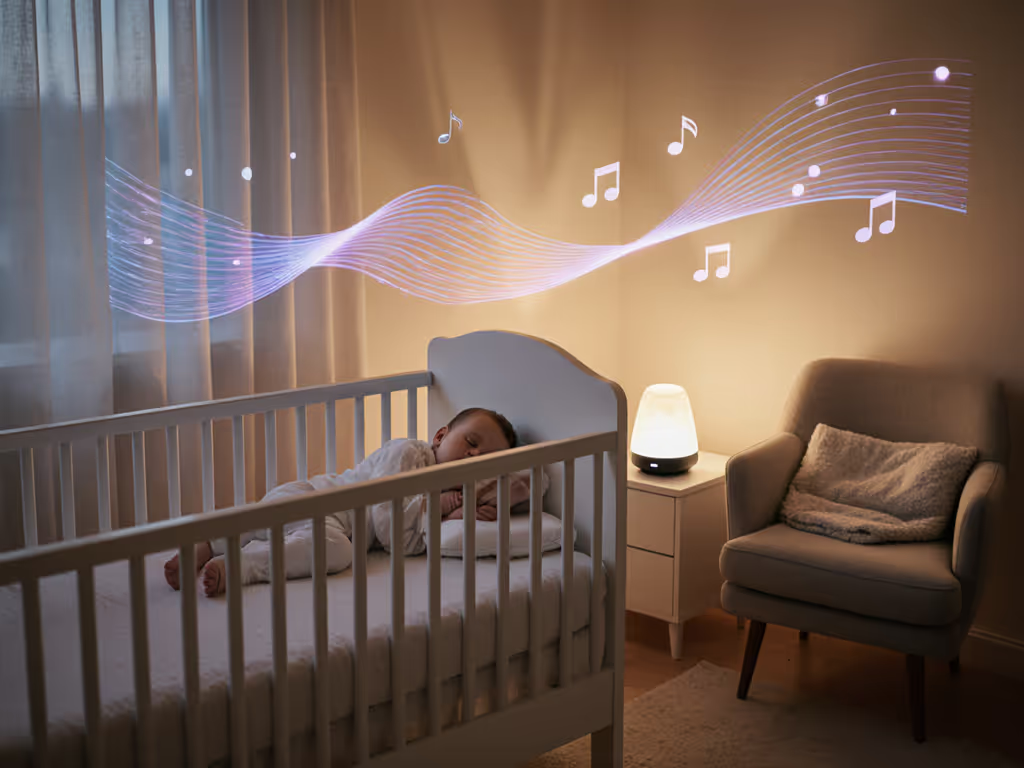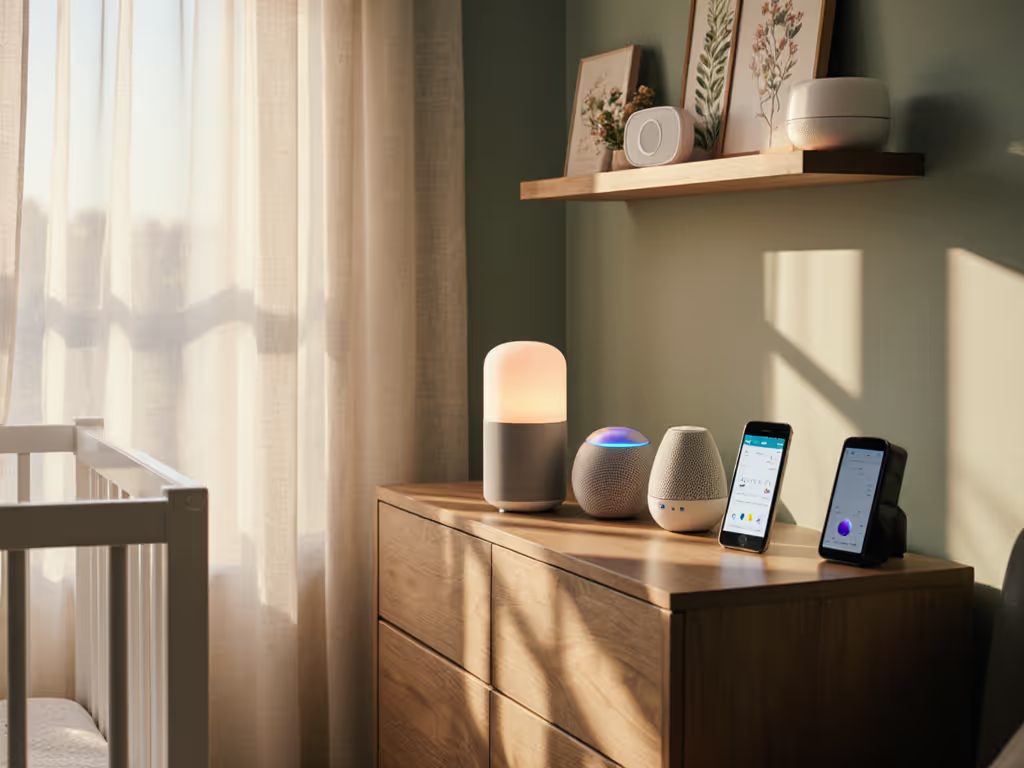
The Essential Guide to Safe Sleep Environments
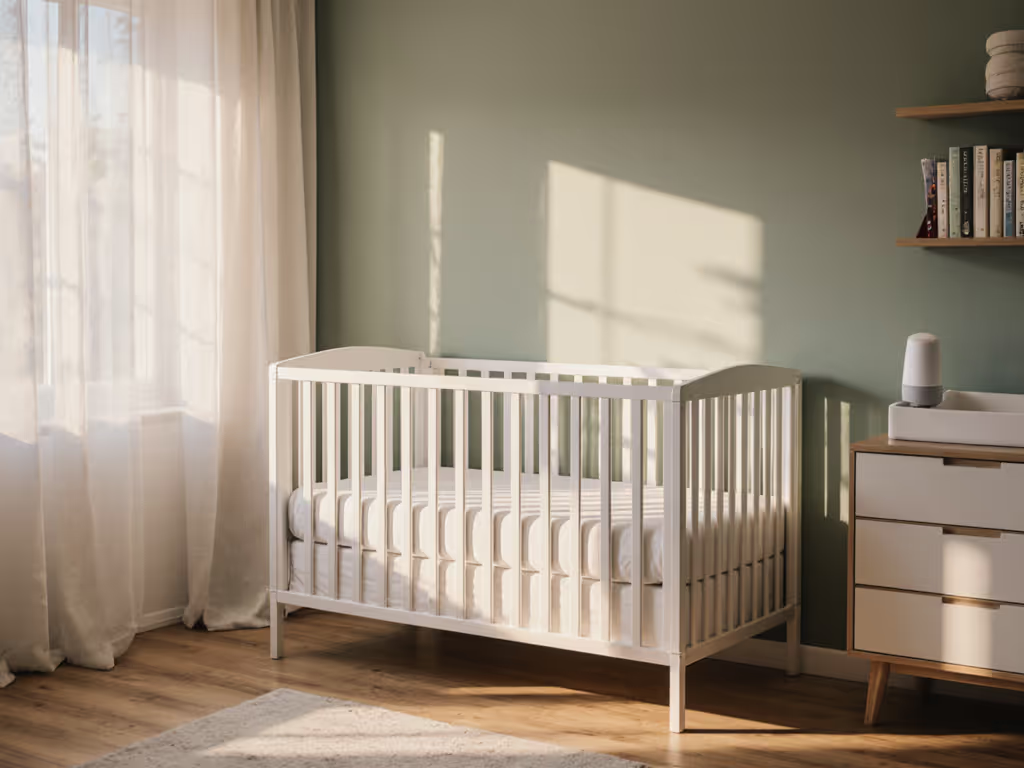
Each year, more than 3,500 babies in the United States die from sleep-related causes. For new parents, creating a safe sleep space can feel overwhelming but knowing a few essential facts can help you make smarter decisions. Understanding proven safety criteria, choosing the right products, and avoiding common risks can protect your infant and offer priceless peace of mind during those first critical months.
Key Takeaways
| Point | Details |
|---|---|
| Safe Sleep Environment | Infants should sleep on their backs in a firm crib, bassinet, or bedside sleeper, free from soft bedding and toys, while room-sharing with parents for at least six months. |
| Regulatory Compliance | Adhere to safety standards set by the CPSC, avoiding products like inclined sleepers and crib bumpers banned under the 2023 Safe Sleep for Babies Act. |
| Risk Reduction Strategies | Implement practices such as maintaining a safe sleep surface, appropriate room temperature, and avoiding bed-sharing to minimize SIDS risks. |
| Avoid Unsafe Practices | Steer clear of using soft bedding, improper positioning, or weighted products, which can increase suffocation risks and compromise infant safety. |
Defining Safe Sleep Environment Criteria
Ensuring a safe sleep environment for infants requires careful attention to multiple critical factors that directly impact an infant's health and wellbeing. The CDC provides comprehensive guidelines that serve as the gold standard for creating secure sleeping spaces for babies. At its core, a safe sleep environment minimizes risks of sudden infant death syndrome (SIDS) and provides optimal conditions for healthy infant development.
Key components of a safe sleep environment include surface characteristics, positioning, and surrounding elements. Specifically, infants must always sleep on their backs on a firm, flat surface with minimal additional items. This means:
- A safety-approved crib mattress with only a fitted sheet
- No soft bedding, pillows, bumper pads, or toys in the sleep area
- The baby's sleep space positioned in the same room as parents through at least six months
Beyond physical setup, temperature regulation and consistent monitoring play crucial roles. Parents should maintain a comfortable room temperature between 68-72°F, dress infants in lightweight sleep clothing, and avoid overheating. Regular visual checks and using appropriate monitoring devices can help ensure ongoing safety throughout an infant's sleep cycle.
Types of Safe Infant Sleep Surfaces
Choosing the right sleep surface is a critical decision for infant safety, with multiple options designed to provide secure and comfortable sleeping environments. Cribs, bassinets, and bedside sleepers represent the primary categories of safe infant sleep surfaces, each offering unique advantages for different stages of infant development and parental needs.
The traditional crib remains the most versatile long-term sleep solution. Modern cribs must meet stringent safety standards, featuring:
- Firm mattress with tight-fitting sheets
- Slat spacing no wider than 2.375 inches
- Sturdy construction without decorative cutouts
- No drop-side mechanisms
Bedside sleepers offer an innovative approach to safe co-sleeping, providing proximity to parents while maintaining a separate, firm sleep surface. These attachable sleep stations allow room-sharing without the risks associated with bed-sharing. They typically feature:
- Secure attachment mechanisms to parents' bed
- Breathable mesh sides
- Firm, flat sleeping platform
- Height-adjustable designs
For newborns and very young infants, bassinets provide a compact, portable sleeping solution that meets safety recommendations. Their smaller size creates a more contained environment, helping babies feel secure while allowing easy parental monitoring during those critical first months of life.
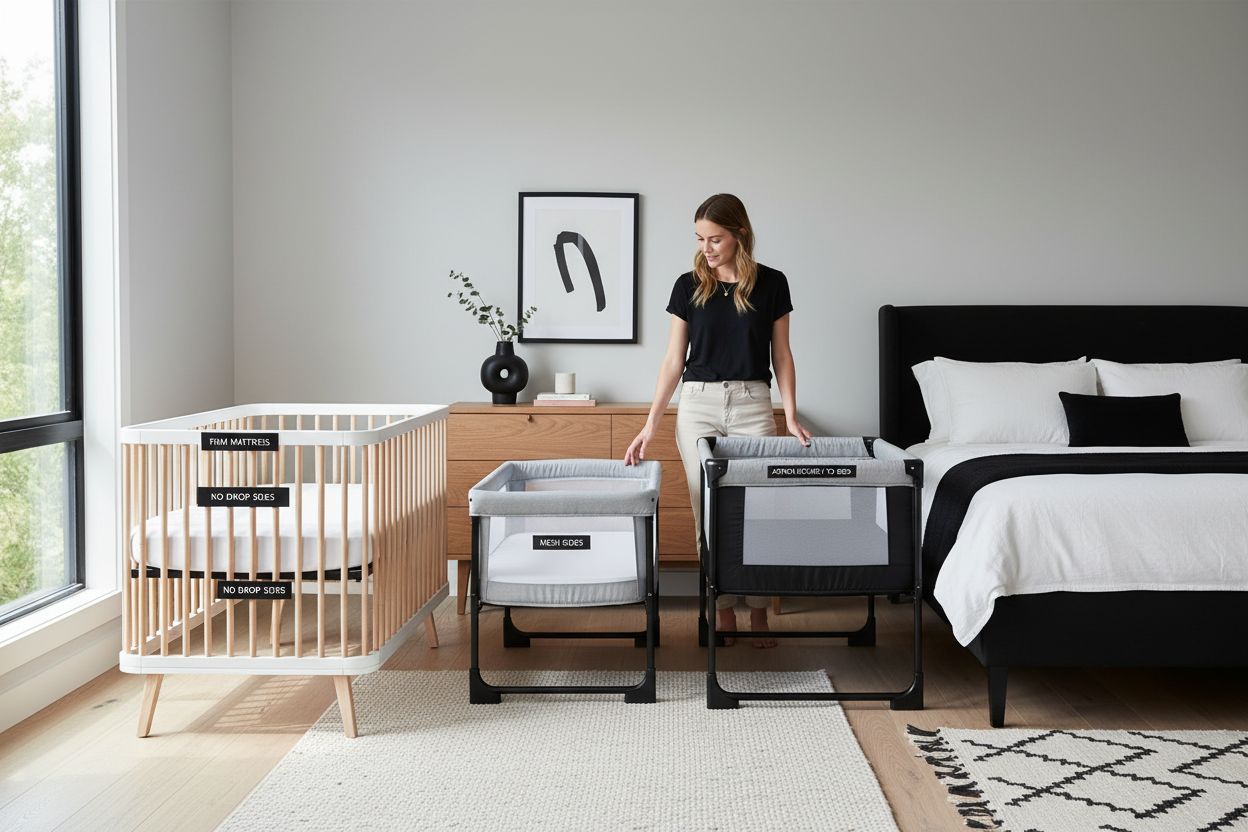
Here's a comparison of the main safe infant sleep surfaces:
| Feature | Crib | Bassinet | Bedside Sleeper |
|---|---|---|---|
| Recommended Age Range | Birth through toddlerhood | Newborns<br>First few months | Newborns<br>Early infancy |
| Size | Large<br>Stationary | Small<br>Portable | Medium<br>Attachable |
| Safety Standards | Stringent<br>Longstanding | Regulated<br>Short-term use | Regulated<br>Meets CPSC rules |
| Key Benefits | Versatile<br>Long-term use | Space-saving<br>Easy to move | Parent proximity<br>Room-sharing |
| Unique Features | Slat spacing<br>No drop sides | Compact<br>Enclosed feel | Mesh sides<br>Height adjustable |
Key Risk‑Reducing Sleep Environment Features
Addressing infant sleep safety involves implementing multiple strategic features that collectively reduce risks of sudden infant death syndrome (SIDS) and promote healthy sleeping conditions.
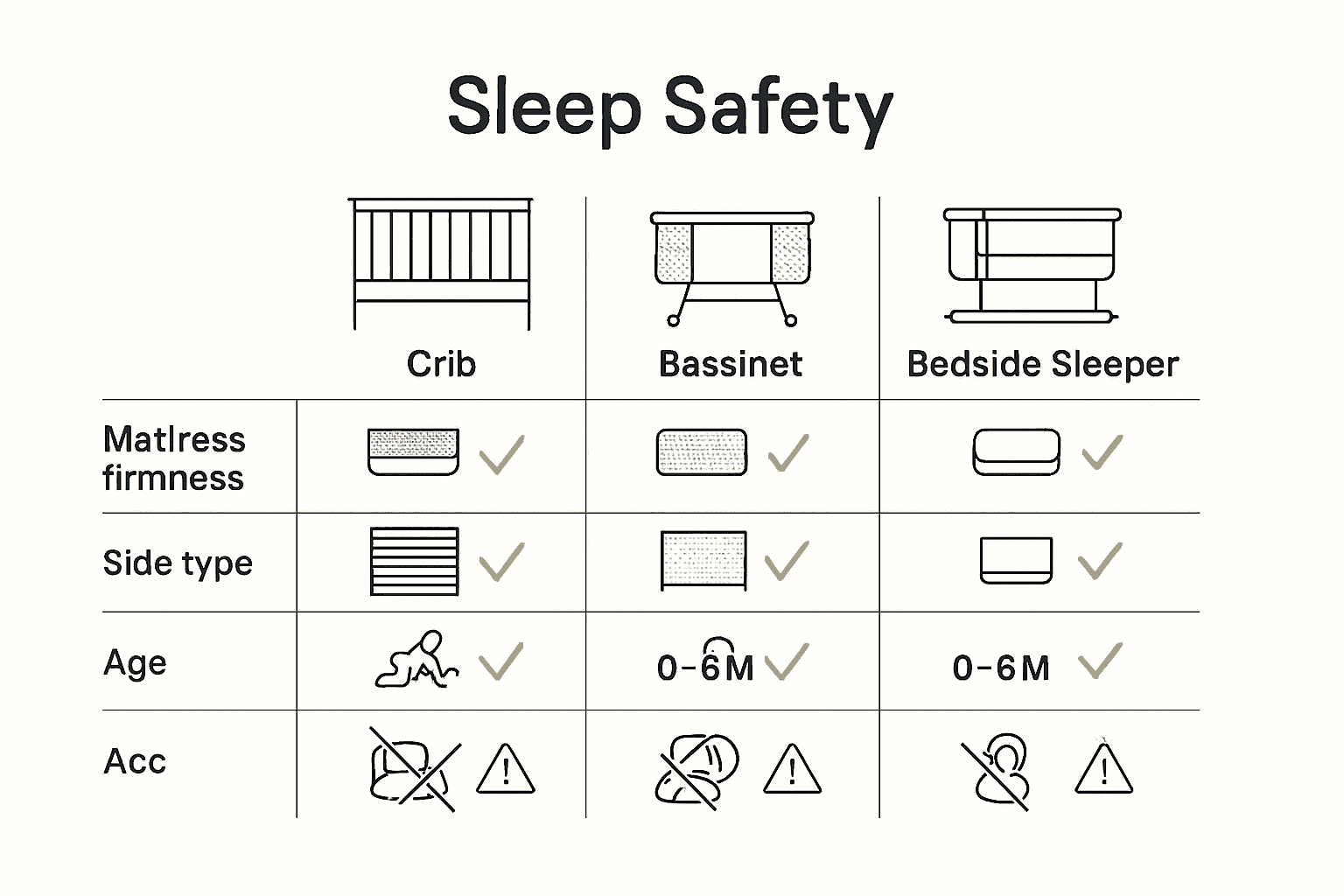 The NIH Safe to Sleep campaign provides comprehensive guidance on creating environments that protect vulnerable infants during their most critical developmental stages.
The NIH Safe to Sleep campaign provides comprehensive guidance on creating environments that protect vulnerable infants during their most critical developmental stages.
Key risk-reducing strategies focus on several core components:
- Room Sharing: Positioning the infant's sleep space in the parents' room for at least six months
- Feeding Practices: Prioritizing human milk when possible
- Sleep Surface Management: Eliminating soft objects, loose bedding, and potential suffocation hazards
Swaddling techniques represent another critical risk-reduction approach. The Sleep Health Foundation recommends using lightweight wraps that promote back-sleeping, with important caveats. Parents should discontinue swaddling immediately once an infant shows signs of rolling, transitioning to safer alternatives like properly sized baby sleeping bags with fitted neck and arm openings.
Additional protective measures include maintaining an appropriate room temperature, using a firm sleep surface, and considering the strategic use of pacifiers once feeding is well-established. These evidence-based interventions work synergistically to create a comprehensive safety framework that supports infant health and reduces potential sleep-related risks.
Legal and Regulatory Safety Standards
Infant sleep product safety has become increasingly regulated as consumer protection agencies respond to critical safety concerns and documented risks to infant health. The US Consumer Product Safety Commission (CPSC) has been at the forefront of implementing stringent safety standards, particularly in response to tragic incidents involving infant sleep products that have resulted in preventable injuries and deaths.
Recent regulatory changes have dramatically transformed the infant sleep product landscape. Key legislative milestones include:
- The 2023 Safe Sleep for Babies Act, which comprehensively banned the sale of inclined sleepers and crib bumpers
- Updated CPSC regulations limiting infant sleep product inclines to no more than ten degrees
- Mandatory safety certifications for all infant sleep surfaces
Internationally, countries like Australia have developed comprehensive consumer goods safety standards specifically targeting infant sleep environments. The Australian Consumer Goods (Infant Sleep Products) Safety Standard 2024 provides extensive guidelines that govern design and safety requirements for critical infant sleep products. These standards meticulously address factors such as:
- Product structural integrity
- Mattress firmness and fit
- Safe bedding specifications
- Dimensional requirements for cribs, bassinets, and portable sleep spaces
These evolving legal frameworks represent a critical commitment to infant safety, transforming industry practices and providing parents with increasingly robust protections against potential sleep-related hazards.
Common Unsafe Practices to Avoid
Navigating infant sleep safety requires vigilant awareness of practices that can unknowingly compromise a baby's wellbeing. Suffocation risks and unintentional hazards frequently emerge from seemingly innocuous choices that parents might consider comfortable or convenient for their infants.
Some of the most critical unsafe practices to avoid include:
- Bed-sharing: Despite cultural beliefs, sleeping in the same bed with an infant dramatically increases suffocation and SIDS risks
- Soft Bedding: Using pillows, blankets, stuffed animals, or cushioned surfaces in the infant's sleep area
- Incorrect Positioning: Placing babies on their stomachs or sides instead of their backs
- Overheating: Overdressing infants or maintaining excessively warm sleeping environments
Recent safety developments highlight emerging risks with weighted sleep products. Major retailers like Amazon and Target have discontinued selling weighted baby blankets, sleep sacks, and swaddles after expert warnings about potential breathing obstructions and increased suffocation dangers. These products, despite seeming comforting, can restrict an infant's natural movement and compromise respiratory function.
Parents should also be cautious about improvised sleep solutions or using adult bedding, furniture, or accessories not specifically designed for infant safety. Always prioritize specialized, safety-certified infant sleep products, follow pediatric guidelines, and create a minimalist sleep environment that eliminates potential risks while providing a secure, comfortable space for infant rest.
Bring Science and Comfort Together for Safer Infant Sleep
You want the safest sleep for your baby, but creating the right environment can feel overwhelming. The article highlights just how important the right surface, sound, and monitoring are for reducing risks like SIDS and providing true peace of mind. Many parents struggle to find products that are not only proven in the lab but also tested in real homes to fit daily routines.
At Acoustic Lab for Little Ears, we go beyond generic advice by offering guides rooted in hard data and honest, parent-led experiences. Our lab-tested sleep guides use accurate decibel measurements and real-home reviews to help you choose the safest, most effective options for your nursery. Let your baby rest peacefully while you protect what matters most. Ready to create a safe sleep environment tonight? Visit Acoustic Lab for Little Ears to get your expert-backed recommendations now.
Frequently Asked Questions
What are the key components of a safe sleep environment for infants?
A safe sleep environment includes a firm flat mattress, proper positioning with the baby always on their back, no loose bedding or soft toys, and ideally keeping the baby's sleep space in the same room as the parents for at least six months.
What types of sleep surfaces are recommended for infants?
The recommended sleep surfaces for infants include cribs, bassinets, and bedside sleepers. Each type has its own safety standards and benefits tailored for different stages of infant development.
How should I manage the sleep surface for my infant?
To ensure infant safety, eliminate soft objects and loose bedding from the sleep area, use a firm mattress with a fitted sheet, and ensure that all sleep surfaces meet safety regulations.
What common unsafe sleep practices should I avoid with my baby?
Avoid bed-sharing, soft bedding, incorrect positioning (like stomach sleeping), overheating, and using weighted sleep products, as these can significantly increase the risk of suffocation and SIDS.

